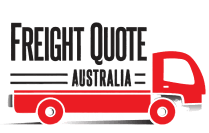
Transport for NSW is a government agency responsible for managing transportation services and infrastructure in New South Wales. It oversees trains, buses, ferries, light rail and road and has a focus on improving safety, efficiency and accessibility for all travellers.
What Does Transport for NSW Do?
Transport for NSW manages the multi-billion budget for transport related infrastructure in NSW. They work on a wide range of initiatives, including:
Public transport planning
Transport for NSW strategises and implements plans to improve the reliability, frequency and coverage of public transit services. This involves optimising routes, schedules and infrastructure investments to meet the evolving needs of commuters.
Infrastructure development
The agency leads infrastructure projects to expand and modernise transportation networks. This includes building new rail lines, stations and roads, as well as integrating smart technology solutions to improve connectivity and reduce congestion.
Road safety
Transport for NSW reduces road-related accidents and fatalities through education campaigns, enforcement measures and targeted interventions. They promote responsible driving and pedestrian behavior to create safer streets for everyone.
What is the History of Transport for NSW?
Transport for NSW was formed in November 2011. Before this, RMS (Roads and Maritime Services) was responsible for managing road networks and maritime services in NSW. When Transport for NSW (TfNSW) was formed in 2011, RMS was one of the agencies that were integrated into the new organisation. This restructure aimed to centralise transportation management and improve coordination among various transportation sectors under one main umbrella.
Transport for NSW Future Plans
Transport for NSW is actively engaged in several initiatives and projects in New South Wales.
Among these:
-
- The expansion of the Sydney Metro network stands out as a significant endeavour, aimed at improving connectivity and accessibility within Sydney and its surrounding areas.
- The development of a rail link to connect Western Sydney Airport to the Sydney rail network is set reduce traffic congestion by removing 110,000 cars off the road. The Inland Rail Project is also currently ongoing in NSW, however, it will likely only offer freight services. This will improve efficiency in the freight sector and also reduce the number of trucks on the road.
- Road infrastructure projects, including motorway expansions and road safety improvements, are also prioritised to enhance traffic flow and safety across the state.
- The agency is also investing in cycling and pedestrian infrastructure to promote healthier modes of transport, while also encouraging the use of electric vehicles as a more sustainable way to drive.
What is an Opal Card?
Opal cards are smartcard-based tickets used for public transportation across NSW. These cards are a convenient way for users to pay for travel on trains, buses, ferries and light rails. The Opal card system was introduced to replace paper tickets and offer passengers a seamless and easy travel experience.
Opal cards can be easily topped up with funds either online, at designated retailers or at Opal card machines located at stops (e.g. a train station). To use an Opal card, simply tap it on the reader when entering and exiting public transport. Fares are automatically calculated based on the distance travelled, when you are travelling and how you are travelling.
Transport for NSW Jobs
Some of the main job categories that TfNSW offers include:
-
- Engineering and technical
- Customer service
- Frontline operations
- Technology
- School crossing supervisor
- Corporate
- Regional and hybrid
- Trades and services
- Finance and commercial.
Transport for NSW is a significant employer in New South Wales, with a workforce of over 25,000 people. These employees work across a diverse range of roles.
Where is Transport for NSW Located?
Transport for NSW is headquartered in Sydney. Their main office is located at 231 Elizabeth Street, Sydney NSW 2000. However, TfNSW operates across the entire state, managing and improving transportation services and infrastructure in both urban and regional areas.
Transport for NSW Budget
The Minns Labor Government’s 2023-24 Budget is investing $72.3 billion over the next four years to improve road, train, metro, bus, ferry, light rail and active transport options.
Some of these include:
-
- Investing an additional $1 billion in Sydney Metro City and Southwest to get the project back on track after delays and cost blowouts.
- $7.9 billion over four years to deliver the Sydney Metro to Western Sydney Airport, with six new stations to service the future Western Sydney International Airport.
- $302.7 million reserved for a Western Sydney Bus network to connect the communities of Penrith, Liverpool, Campbelltown to the future Western Sydney International Airport.
- $300 million to improve train station car parks and make stations more accessible with the installation of new lifts, ramps and footbridges.
- $200 million reserved to speed up the planning for the procurement, construction and delivery of Parramatta Light Rail Stage 2 for Western Sydney.
- $71.1 million to return Freshwater Class ferries to the Circular Quay-Manly route.
- $43 million for seven new Australian-made Parramatta River Class ferries.
- $15.8 million for Transport NSW to invest in the Public Transport Information and Priority System to improve real time bus tracking for passengers. This investment will help end “ghost buses” and improve the reliability and confidence of passengers.
$60 million in additional investment for active transport infrastructure. This will enable local councils to deliver projects that expand cycleway networks and increase opportunities for walking, including in greenfield developments in Western Sydney.
